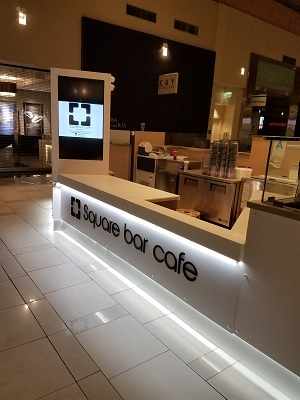
Retail stores always look for new ways to attract customers and increase sales. One of the best ways to do this is by using point of purchase displays. These displays help products stand out and encourage customers to buy. They are placed near checkout areas or in high-traffic spots inside the store. This method is a powerful marketing tool that benefits both brands and retailers.
Types of Point of Purchase Displays in Retail
Retailers use different kinds of point of purchase displays to catch shoppers’ attention. The type of display depends on the product, store layout, and target customers. Some common types include:
Countertop Displays – These are small displays placed near the checkout counter. They usually hold impulse-buy items like candy, gum, or small electronics. Customers see them while waiting in line, making it more likely they will make an additional purchase.
Floor Displays – These free-standing units are placed in the middle of store aisles. They work well for promotions and seasonal products. Their large size helps them grab attention from shoppers walking through the store.
End Cap Displays – Positioned at the end of an aisle, these displays highlight specific products. Many brands use them to introduce new products or push special offers. Since they are easy to spot, they often lead to more sales.
Shelf Talkers – These are small signs or graphics attached to store shelves. They provide extra information about a product, such as benefits, price discounts, or usage instructions. Shelf talkers can make a product more appealing by drawing attention to its unique features.
Every type of point of purchase display serves a unique purpose, helping retailers and brands increase visibility and sales.
Why Point of Purchase Displays Work So Well
There are several reasons why point of purchase displays are highly effective in retail stores. First, they create eye-catching product presentations that encourage impulse buying. Many customers do not plan to buy certain products but decide to do so when they see an attractive display.
Another reason is that these displays help products stand out from competitors. In a store with hundreds of similar products, a well-placed point of purchase display can draw attention to one specific brand. This helps increase sales by influencing customers' buying decisions.
Retailers also use these displays to introduce new products. When shoppers see a new item displayed separately, they are more likely to take notice and consider trying it. This is especially useful for food, beverages, and beauty products.
Additionally, point of purchase displays make it easier to promote discounts and special offers. Shoppers are more likely to buy something if they see a sign that says “Limited Time Offer” or “Buy One, Get One Free.” This strategy encourages quick decision-making, leading to more sales.
Finally, these displays improve the overall shopping experience. They provide useful information, highlight featured products, and add visual appeal to the store. Customers appreciate well-organized, engaging displays that make it easy to find new and exciting products.
The Future of Point of Purchase Displays in Retail
Retail marketing is constantly evolving, and point of purchase displays continue to change with the times. New technology is making these displays more interactive and engaging than ever before.
One trend is the use of digital screens in displays. Instead of static signs, some stores now use small screens that show videos, product information, and advertisements. These digital displays capture attention and provide more details than traditional printed signs.
Another growing trend is the use of smart displays with sensors. These displays can detect when a customer is nearby and play a message or offer a discount code. This makes shopping more personalized and encourages purchases.
Sustainability is also becoming important in retail displays. Many brands are switching to eco-friendly materials like recycled cardboard and biodegradable plastics. This helps reduce waste while still creating eye-catching displays.
As online shopping grows, stores are using point of purchase displays to create a better in-person shopping experience. Many displays now feature QR codes that customers can scan to get more information, watch product demonstrations, or even buy online. This mix of physical and digital shopping helps attract modern consumers.
Retailers and brands that invest in creative, well-placed point of purchase displays will continue to see higher sales and customer engagement. These displays are a key part of successful marketing and will remain important in the future of retail.












Write a comment ...